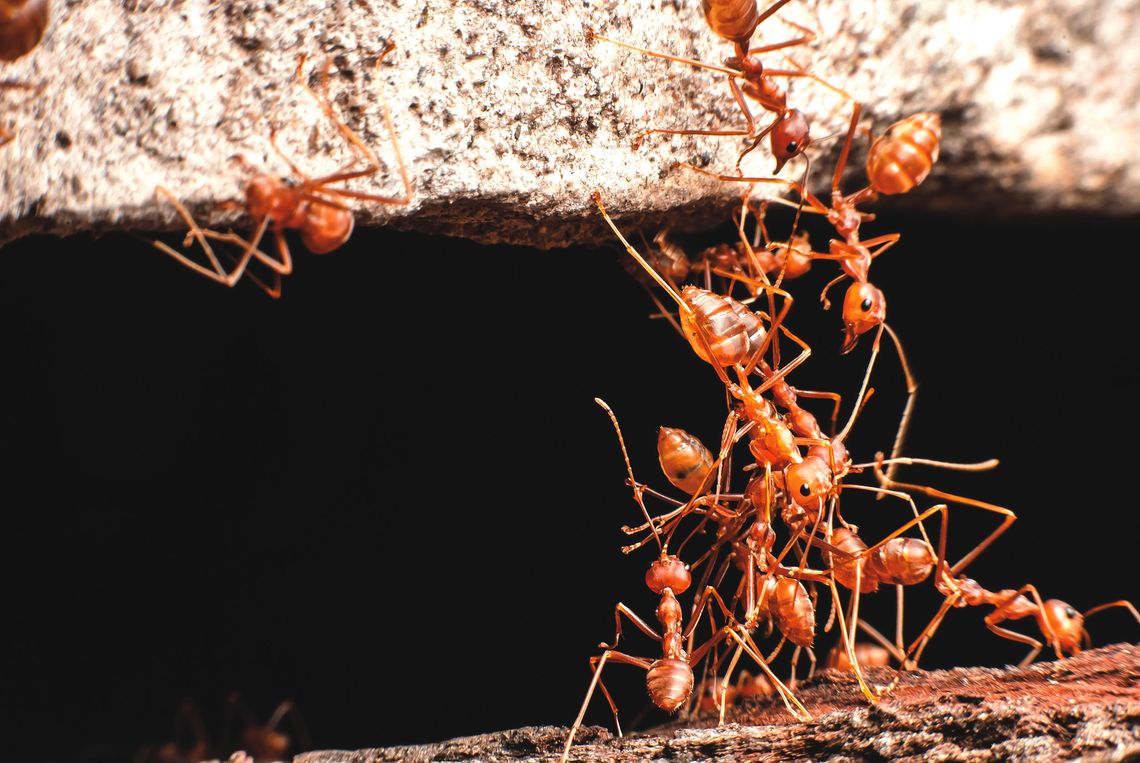Fire Ants are the most common insect pests of our home lawns. They occur in practically every lawn in Mississippi. Even if you work to achieve a totally fire ant free lawn, it probably won’t stay that away for long. New fire ant colonies thrive especially well in areas that are free of other, competing colonies. Fire ant control is a never-ending battle in the South, but there are steps to take to keep your lawn and landscape relatively free of fire ants.
The easiest, cheapest, and most effective way to control fire ants is to use baits. Learn to use baits properly and preventively, and the number of fire ants in your yard can be reduced by 80 to 90 percent. The key to success with baits is applying them as broadcast treatments instead of treating individual mounds. You will never win the battle against fire ants by treating individual mounds. When properly applied, granular fire ant baits are low cost, quick and easy to apply, they are safe to children and pets and give up to 80% control. Baits are “fire ant edible” granules that contain low doses of slow acting insecticides or insect growth disrupters.
In addition to the big mounds, which you can see, there are a lot of little colonies that are just getting started. If you eliminate only the big mounds, the small colonies will grow into big mounds. Broadcast bait treatments target all colonies in the yard, regardless of size.
Early spring is one of the best times to apply fire ant baits because fire ants are actively foraging for food at this time. If you are going to treat only one time per year, do it in the spring. But you can improve control by treating again in midsummer and a third time in the fall, especially if you live in a rural area where fire ants are abundant. If you live in a more urban area, you may only need to treat once or twice per year.
We need to be proactive. We need to treat before we see big fire ant mounds in our yard. We can use the holidays Easter, Independence Day, and Labor Day to remind us when it is time to put out fire ant bait. It is better to pick a time when it is not likely to rain for a couple of days. This will give the ants time to collect the bait and carry it back to the mound before it is washed away.
Most fire ant baits are applied at a rate of 1 to 2 ½ pounds per acre. It is easy to over apply if we don’t read and follow the directions. Baits are a cheap way to control fire ants if we use the proper rate.
The insecticides used in fire ant baits are slow acting to allow time for the insecticide to be spread throughout the colony. A fast-acting insecticide would kill the worker ant before it got back to the colony with the bait granule. Depending on the bait used, it can take 2 to 6 weeks to obtain maximum control. Baits work. We just have to be patient.
Baits will give 80 to 90 percent control, when properly applied two or three times per year. To get extra control, we can spot treat any mounds that survive the bait treatments. It is best to wait several days after applying baits before you treat individual mounds that survive the bait treatment. This allows time for foraging worker ants to carry the baits into colonies and improves your chances of killing the queen.
You can use baits to treat individual mounds, but they won’t work as fast as other types of mound treatments. However, if you were to use baits on individual mounds, don’t put the bait directly on top of the mound. The ants won’t find it on the roof. Instead, spread the bait on the area around the mound, so the foraging workers can find it readily. I remember wondering where the entry and exit is to a fire ant mound? I assumed it was in the middle. I have discovered that ants enter and exit through underground tunnels that radiate away from the mound. The entrances to these tunnels are anywhere from 5 to more than 20 feet away from the mound.
Source: “Control Fire Ants In Your Yard,” Mississippi State University Extension, Dr. Blake Layton, Publication 2429


Comment
Comments